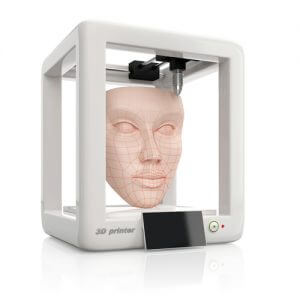 Technology continues to advance in ways that nobody could have imagined only a few years ago. Take for example 3D printing. Most people are still amazed by the capabilities of 3D printing, yet 3D printing continues to advance in leaps and bounds year after year. Only recently, a group of scientists presented a 3D bioprinter prototype that can print functional human skin, which can be used for skin transplants, scientific research, or even for the testing of cosmetic, pharmaceutical or chemical products.
Technology continues to advance in ways that nobody could have imagined only a few years ago. Take for example 3D printing. Most people are still amazed by the capabilities of 3D printing, yet 3D printing continues to advance in leaps and bounds year after year. Only recently, a group of scientists presented a 3D bioprinter prototype that can print functional human skin, which can be used for skin transplants, scientific research, or even for the testing of cosmetic, pharmaceutical or chemical products.
The New 3D Bioprinter
The 3D bioprinter was showcased in the electronic version of Biofabrication, a well-regarded scientific journal. The human skin created by the 3D bioprinter is the first living organ to be created through the use of bioprinting. It has the ability to replicate the skin’s natural structure, including the first external layer, the epidermis, and the dermis. The dermis is produced using fibroblasts that produce collagen, which is a protein that helps provide the skin with elasticity and mechanical strength.
Instead of using colored inks and cartridges, like typical printers do, the 3D bioprinter uses injectors with biological components called bioinks. These bioinks must be used in very specific conditions and have to be correctly deposited to ensure that the cells won’t deteriorate. The act of depositing the bioinks is actually a computer controlled process because of this very reason.
The ability to print human skin provides huge advantages to the scientific and medical community. For example, bioprinting allows skin to be printed in an automated and standardized way, making this process much less expensive than manual skin production. It also allows consumer chemical products to be tested without the use of animals, thereby abiding to strict industry regulations.
The technology is currently being approved by various European regulatory agencies to ensure that the human skin that is printed by 3D bioprinters can be safely used for transplants on burn patients as well as on patients with certain skin disorders.
Keep track of the latest advancements in medical technology, such as the invention of the 3D bioprinter, by keeping up with The Benefits Store.
 The Benefits Store
The Benefits Store The Benefits Store
The Benefits Store 

Blog Home Page
Categories